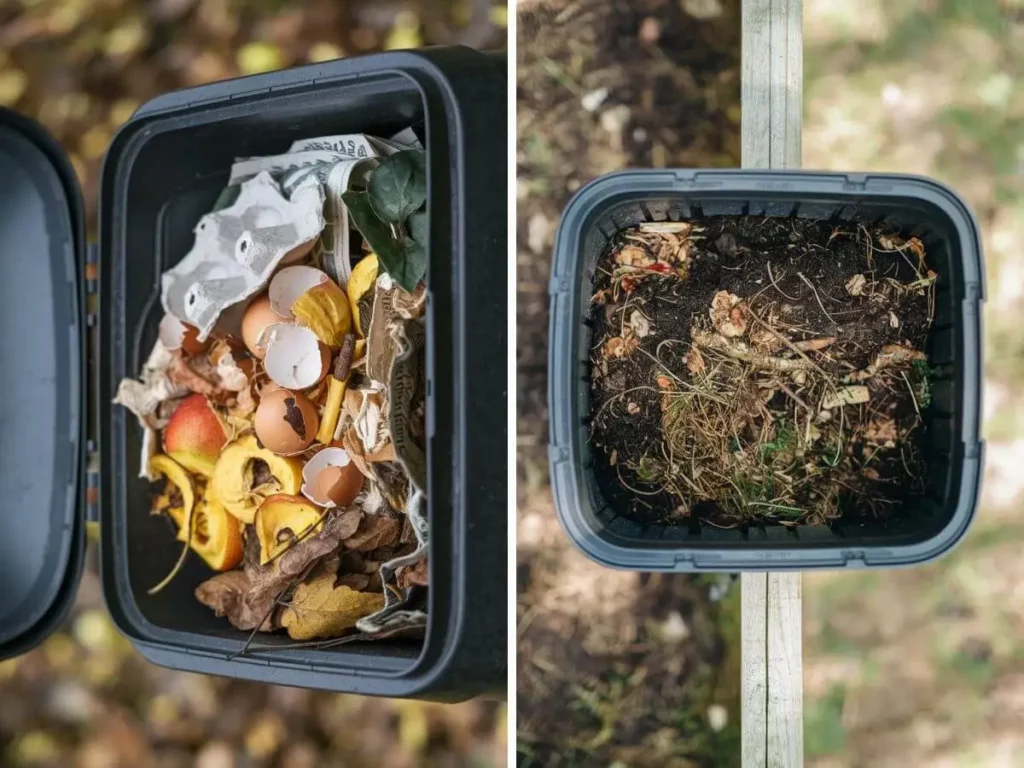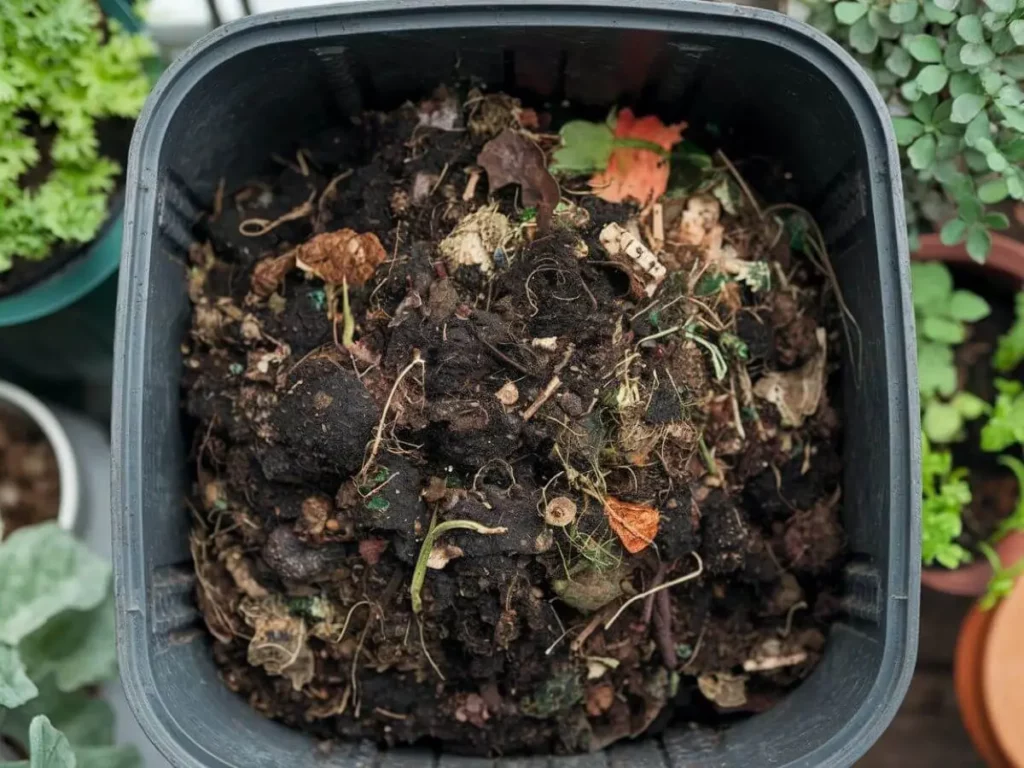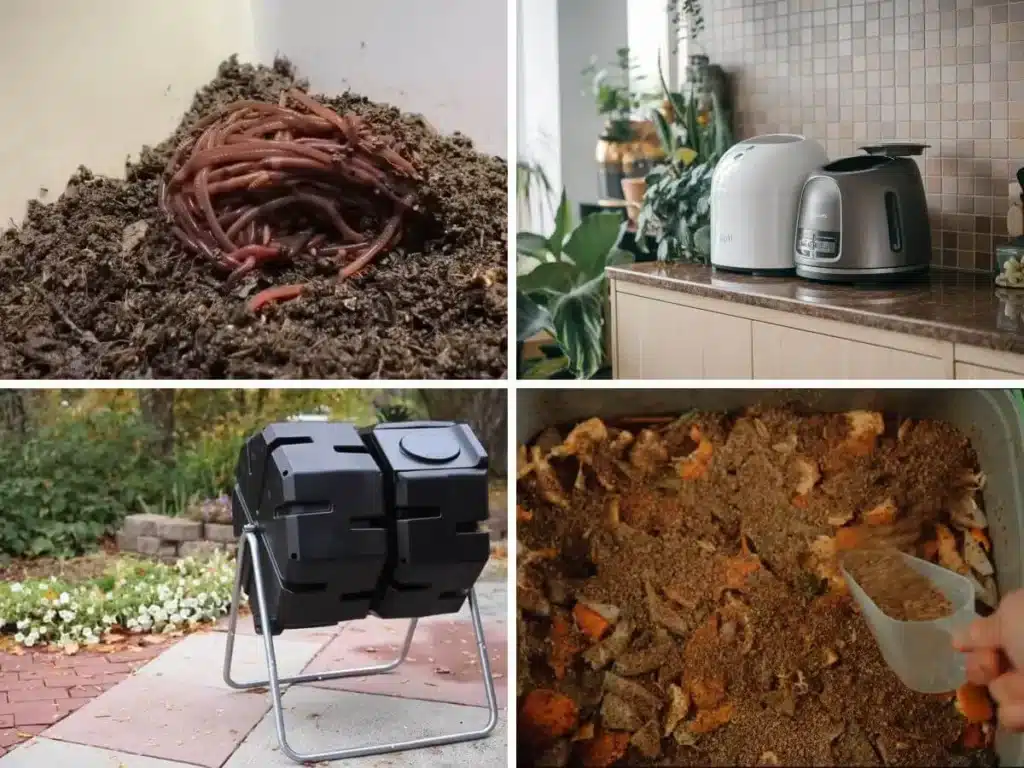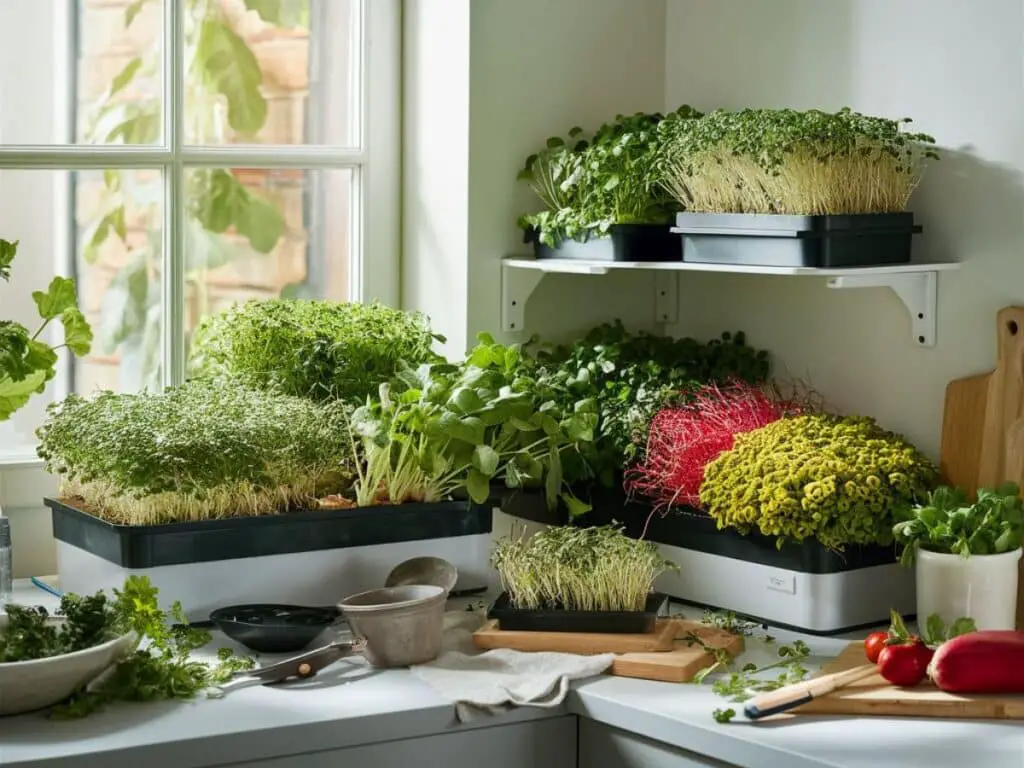(Disclaimer:This post may contain affiliate links which means I may receive a commission for purchases made through links. I will only recommend products that I genuinely believe in) Learn more.
No matter if you live in a busy city or a peaceful suburb, you can grow fresh, tasty veggies right at home!
Balcony gardening is getting super popular in the United States. It is so fun to enjoy homegrown food, even when space is tight.
My cousin Carol from California & I started our balcony vegetable gardening adventure in 2020 during the pandemic.
Since I’ve grown a successful balcony garden in New Jersey and with my cousin’s California tips, I’m excited to share this guide with you!
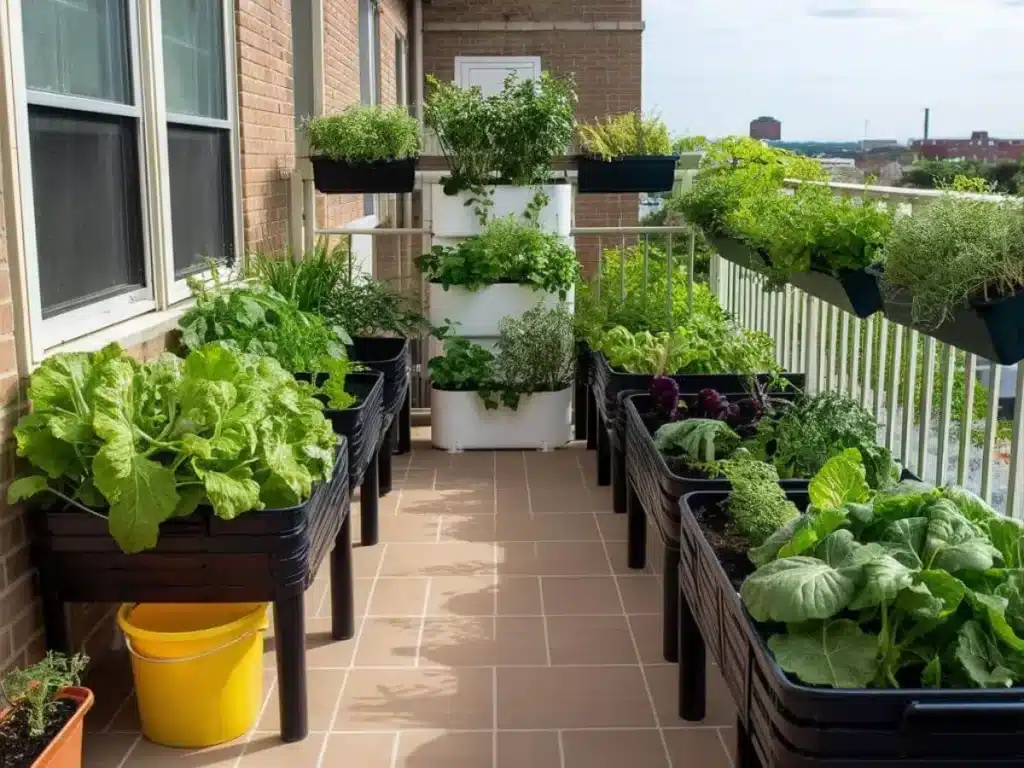
Let’s get into how you can start your own awesome vegetable garden on your balcony.
Environmental Conditions on Your Balcony
When it comes to balcony gardening, the environment matters. First, check how much sunlight your balcony gets.
My east-facing balcony in New Jersey gets a good bit of sun, but it’s not as sunny as my cousin Carol’s spot in California!
If you’re not sure about your sunlight, try using a tool like SunCalc. It helps you see the sun’s path around your home.
Most veggies love at least 6-8 hours of full sun. If you have partial sun or shade, go for leafy greens and herbs that thrive in lower light.
Don’t forget about the wind! Sometimes, my balcony faces strong gusts. So I’ve had to think creatively about wind protection.
Balconies often catch lots of wind, especially high-rise buildings. It can dry out your plants quickly and harm delicate leaves! Think about using windbreaks or putting your pots in sheltered spots.
To learn more about your climate zone you can visit websites like gardenate.com and garden.org
Balancing Load Limits
One important thing people sometimes forget is weight limits. Soil & pots can be very heavy! A cubic foot of soil weighs about 75-80 pounds.
When you add ceramic or terracotta pots, it piles up quickly! Most balconies are made for two people with some plastic chairs & maybe a grill.
That’s why I choose light containers like plastic, resin, or fabric pots whenever I can. They are kind to your balcony’s structure & super easy to move around while giving your garden a new look!
Choosing the Right Containers
Now let’s choose those containers! Sure, while beautiful ceramic pots look great, but lighter options like plastic, fabric or resin may be better for you.

These containers are easier on the weight limits & fantastic for root health! They also store easily during the off-season.
Consider Vertical, Stackable & hanging containers too! These creative solutions are a lifesaver for small balconies like mine in New Jersey.

They give you more growing space without taking up too much floor area. You can mount vertical planters on walls or hang baskets from railings or above structures.
I have an amazing wall of herbs in hanging planters, and my cousin Carol loves her vertical strawberry tower soaking up the California sun!
Selecting the Perfect Soil Mix
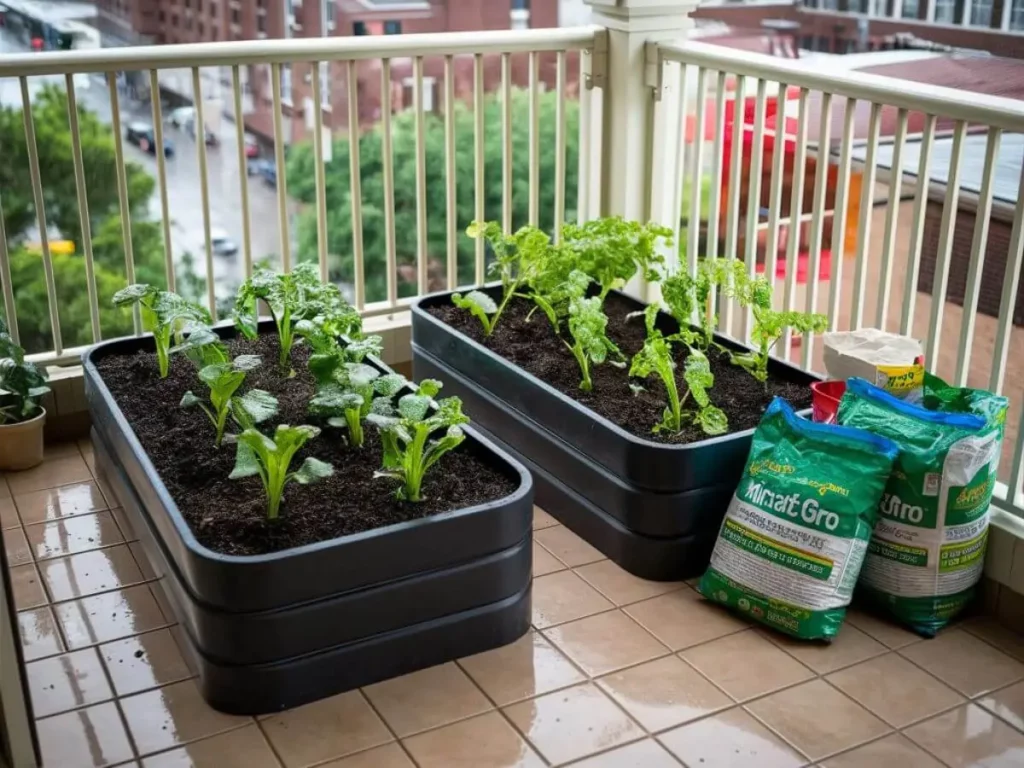
Having a good soil mix is key for container gardening success. I use peat moss, compost, & perlite for perfect drainage & aeration. If any shortage, I also use this one from Amazon,

Remember that balcony plants dry out faster than those planted directly into the ground, so use a soil mix that holds moisture yet drains well!
Best Vegetables for Balcony Gardens
One fun thing about growing veggies in the USA is our climate differences! In spring, I’m planting cool-season crops like lettuce & peas while Carol already enjoys harvesting her warm-season favorites in California.
Here are some popular veggies that do great on balconies:
• Tomatoes (cherry kinds are awesome!)
• Peppers
• Leafy greens (like lettuce & spinach)
• Herbs (basil, mint, parsley – yum!)
• Vertical growers (pole beans & cucumbers)
Hanging baskets? Perfect for trailing plants, think strawberries & cherry tomatoes!
Don’t hesitate to try different varieties suited to your climate! I’ve grown heat-tolerant lettuce that keeps producing even through hot New Jersey summers.
You can source seeds from local Sprouts Farmers Market or can purchase them online from websites like Home Depot, Migardener, etc.
Planting and Care Techniques
Once you’ve picked out containers and plants, planting time will be here! Start from seeds or transplants; just make sure to give them enough room to grow. Trust me, I’ve been overcrowded before, and it wasn’t pretty!
Watering is super important too! During hot days, I check my plants daily. A good tip is to water when the soil feels dry an inch down.
Each plant has its own needs; leafy greens love it moist while Mediterranean herbs prefer drying out between watering sessions. And don’t forget about fertilizing; container plants need food regularly!
Fertilizing Your Vegetable Garden
When feeding your garden, go organic! Organic fertilizers are not just better for nature; they also help improve soil health over time.
I usually use this one from Amazon,

After 3 months once a month, I start watering with MiracleGrow water-soluble fertilizer,

Here are some of my top picks:
- Compost Tea: It’s like a smoothie for plants! You can brew it yourself with compost and water or buy ready-made versions.
- Fish Emulsion: Don’t let the smell scare you away, it has loads of nitrogen and minerals too!
- Worm Castings: Yes, this is worm poop and it’s amazing for plants’ nutrient needs.
- Seaweed Extract: Great for micronutrients, I use it as a foliar spray because my leafy greens love it.
My cousin Carol mixes equal parts blood meal, bone meal & wood ash for her homemade fertilizer,such a perfect blend!
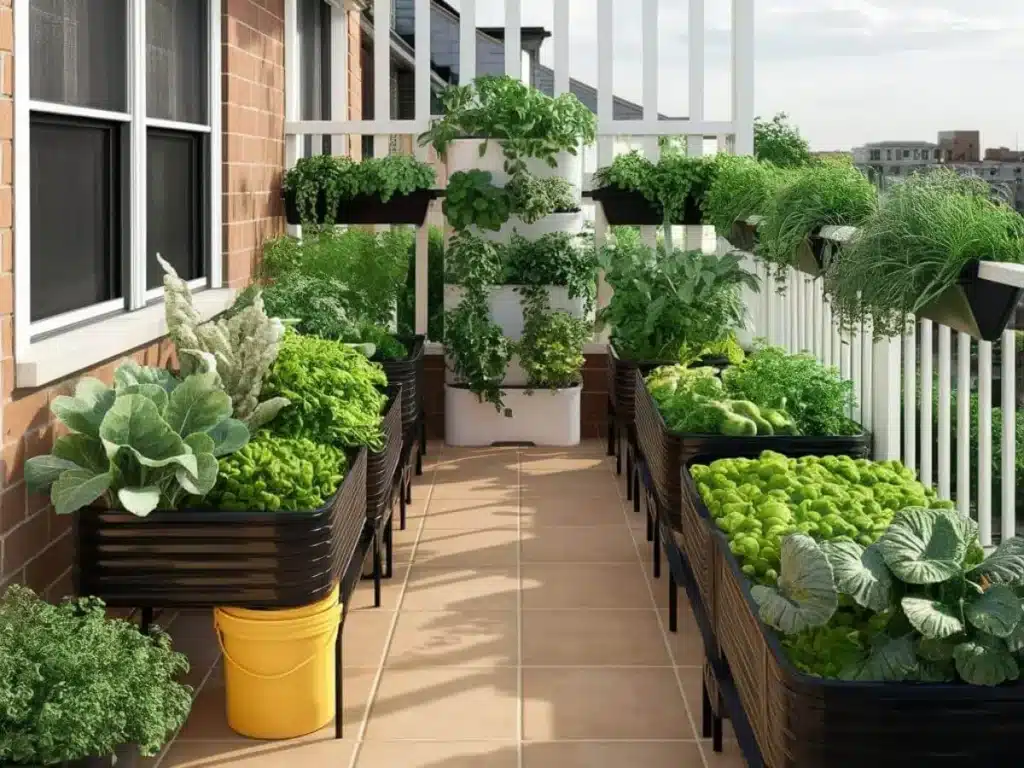
Pest Management in Balcony Vegetable Garden
Pests can still show up on balconies even mine has seen aphids and spider mites! Luckily, balcony gardens see fewer big pests like rabbits unless urban wildlife gets really ambitious.
I prefer organic ways to deal with pests; neem oil and insecticidal soaps work well for me. Catch problems early and act fast if something seems off!
Harvesting Your Homegrown Veggies
There’s nothing quite like biting into a warm tomato right from your own garden! I love stepping out onto my balcony to snip fresh herbs or grab cherry tomatoes as snacks those moments make all the effort worthwhile.
Make sure you harvest regularly, it helps many plants produce even more and get creative cooking with those fresh goodies!
Arizona summers are hot and dry, so you’ll want to plant things that don’t need much water, like eggplant or okra. Seattle is cool and by the ocean, so kale and Swiss chard will grow better there.
No matter where you live, even if it’s hot in the south, cold in the north, or perfect all year round on the west coast, you can have a vegetable garden on your balcony! Just pick plants that do well in your climate and be willing to learn new things as you go.
So what are you waiting for? Grab some containers, soil & seeds, and jump into your own balcony vegetable garden adventure today! Once you’ve tasted that first homegrown veggie, you’ll be hooked forever!
